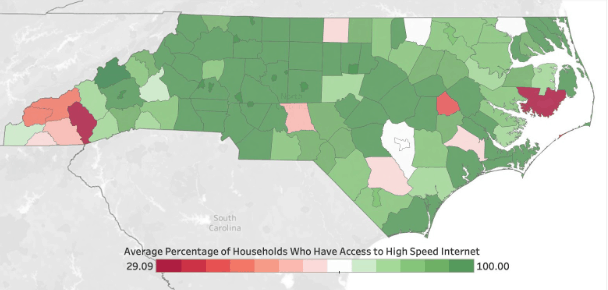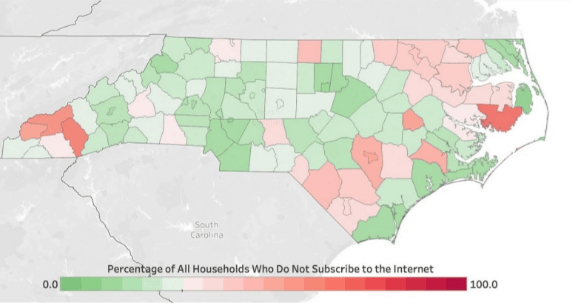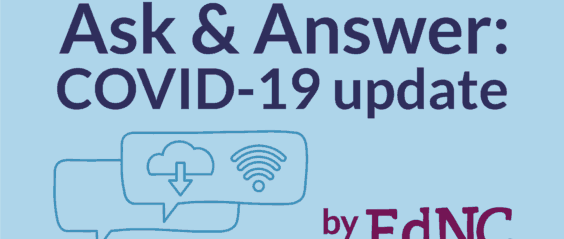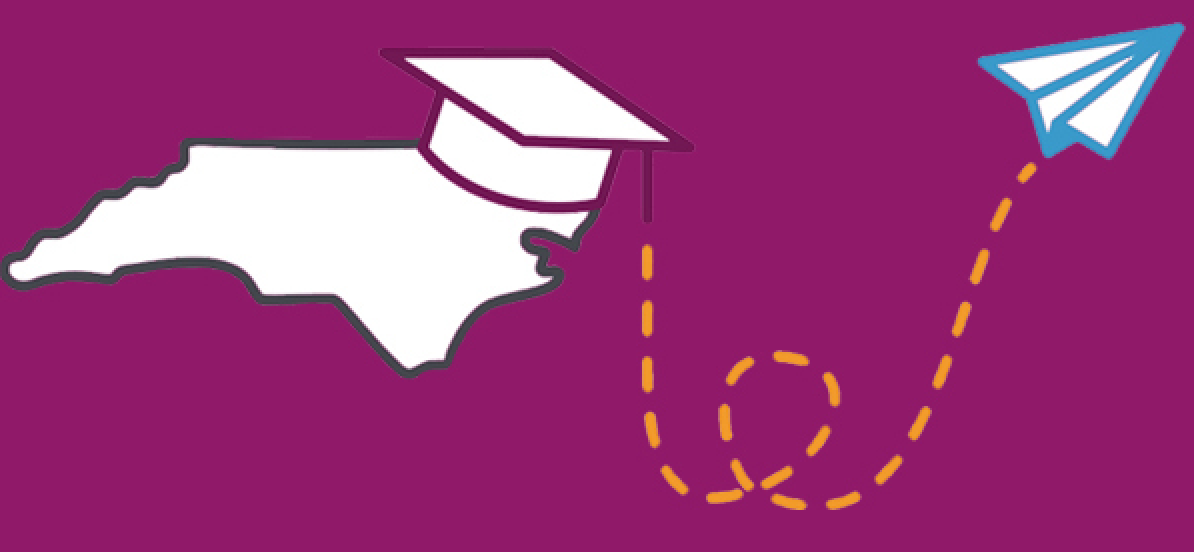Need to know: COVID-19
- As of 11:25 a.m. on Friday, April 3, there were 2,093 confirmed cases in 86 counties in North Carolina with 19 deaths.
- On March 29, Gov. Cooper announced the state’s first payments for unemployment claims would go out this week. The latest U.S. Department of Labor report shows 6.6 million people filed for unemployment last week, with 170,881 of those in North Carolina.
- On March 31, Gov. Cooper signed an executive order prohibiting utility shut-offs, late fees, and re-connection fees.
- Essential workers who are parents and have no other child care options can now apply for financial assistance through NC DHHS.
- North Carolina is following CDC recommendations that people with mild symptoms should stay home and call their doctor to decide if they need a test. Check out this fact sheet from NC DHHS on what to do if you feel sick.
For more, EdNC.org is updating this article daily with news and resources. All daily updates are archived at the bottom of the post.
Policy challenge: Access to internet
As K-12 schools, universities, and community colleges have moved online, access to the internet has become even more important. And while a recent Pew Research Center report highlighted North Carolina as a leader in broadband access, this pandemic has exposed digital gaps.
“’No child left offline’ is the new ‘no child left behind,’” EdNC’s Mebane Rash wrote in a recent article on the broadband gap. In the article, she cites data from the NC Department of Public Instruction Digital Teaching and Learning office.
The first map below shows the percentage of households in each county who have access to high speed internet. Access is defined as areas where households have the option of purchasing high speed internet.

This second map shows an estimated percentage of households in each county who do not have a subscription to the internet.

Based on this data, the report estimates approximately 216,162 K-12 households and 306,437 students in North Carolina do not have an active internet subscription.
School districts and colleges have pursued creative ways of getting students and faculty online, including loaning out hot spots, moving Wi-Fi access points to parking lots, and sending paper packets home on the bus for students. Check out this article about one educator’s struggle to get internet, and this article about how Hyde County Schools is moving online.
Dropping knowledge
April 1 was Census Day, which provided some much-needed (in my opinion) content aside from everything coronavirus-related. William Frey at the Brookings Institute published a good preview of likely headlines we’ll see once the 2020 census is complete. Here are a few.
- America’s population growth will hit all-time low
- NC projected to have between 10-15% population growth
- Growth in racial diversity and growth of the over-55 population
- After a decade of slow growth rates, the 2020 census will show the return of big cities
- NC is projected to gain one congressional seat
What we're reading
Our ‘homework gap’ just became our ‘school gap’ and ‘no child left behind’ just became ‘no child left offline’
Mebane Rash explores the impact of the broadband gap on students as schools move online.... Read the rest-
Census undercounts are normal, but demographers worry this year could be worse
-
What Will U.S. Labor Protections Look Like After Coronavirus?
-
One City Is Paying Restaurants to Make Meals for Homeless Shelters
-
Can hands-on career and tech programs go online during school shutdowns?
-
Ask & Answer | Curious how $50 million of COVID-19 supplemental funds were distributed among school districts, charter schools, and the ISD?
-
Governmental Public Health Powers During the COVID-19 Pandemic


